Protecting remnant swathes of nature is not easy, and may often require concerted, vigorous community efforts. There are many threats: the most common of which seem to be highways and development, which are often backed by considerable financial resources and lots of momentum. So one takes notice when something unusual happens and a community effectively and doggedly organizes itself to protect something dear, and actually succeeds in doing so.
I had the glorious chance last month to visit and spend time in these remaining bushlands, and to interview and film some of the key players in this urban conservation drama. With Peter Newman and filmmaker Linda Blagg, and my daughter Carolena (whose photographic essay to follow below conveys some of the magic quality of this nature), we have together been making a documentary film that tells this story. It is a saga that takes place over several years. Partly battled in the courts, it is mostly a story of how a community rallied, that never gave up, involved thousands of residents, many of who put their personal safety at risk, many were arrested. Two of the most important voices were Kate Kelly who ran the group Save Beeliar Wetlands, and Kim Dravnieks, of Rethink the Link. It has been noted that the majority of the leaders of this campaign were women, and Kate and Kim were two of the most steadfast and passionate in this campaign.
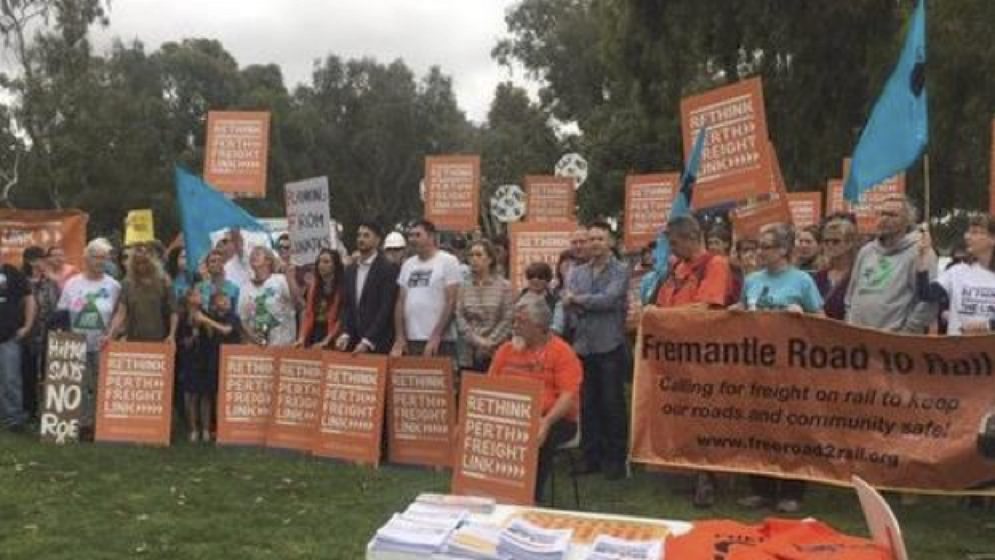
We had the chance to see first-hand the majesty of these surviving bushlands when we interviewed Kate Kelly. She spoke of her experiences leading people through these spaces, giving tours and watching how the land affected them. She spoke of majesty of these trees and wetlands, that to her has become her church. She speaks of the many guided walks she has given and magical effects the wetlands and woodlands have on people. People “soften and they talk slowly and they engage more carefully in their relationships”. These spaces, in short, help to make us better citizens and people.
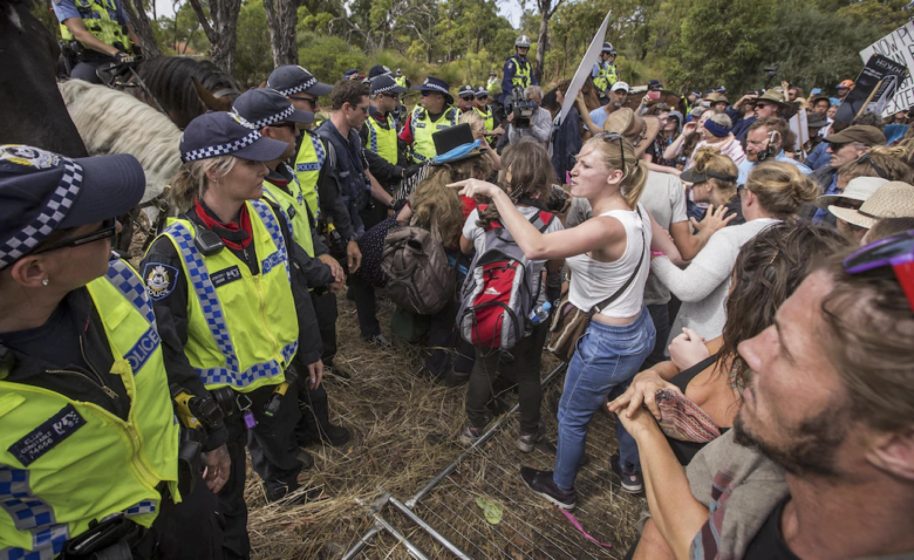
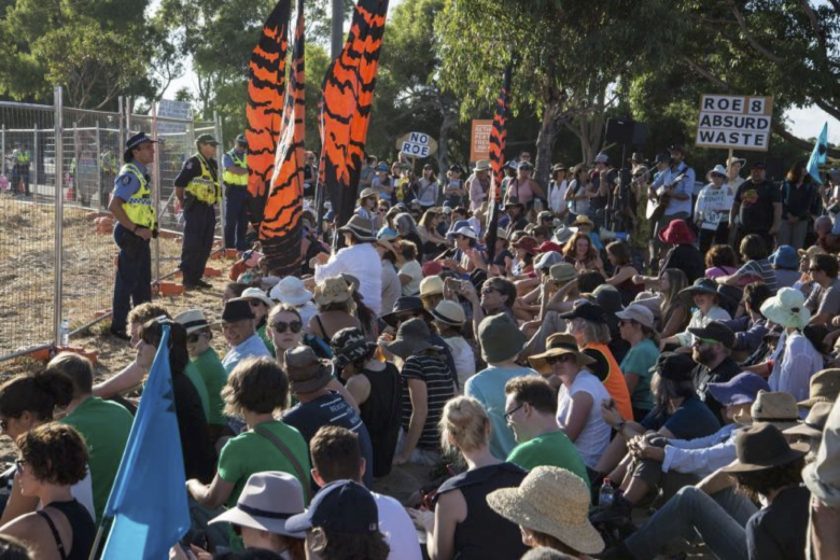
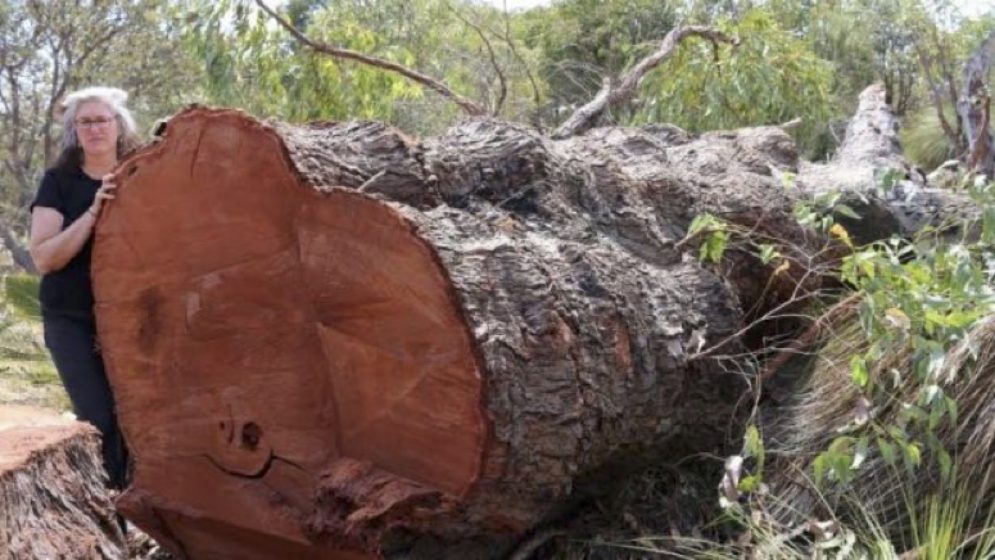
The Perth region is a biodiversity “hotspot”, with remarkable variety of endemics, especially plants. Much of it is found even in these small remnants, from orchids to bandicoots and blue-tongue lizards, and of course the majesty of the trees—paperbarks and swamp banksias where we filmed Kate Kelly. And the bird and animal life here is wonderful. As I walk through the bush on one visit I see and hear rainbow lorikeets, red wattles, New Holland honeyeaters, Australian ravens (one of my favorite sounds). If you are lucky you will be treated to the raucous sounds of black cockatoos, the Carnaby’s is especially rare as a result of the gradual loss of these important habitats and served as a compelling image and mascot for the campaign.
In the end, through a long, multi-year community campaign the highway and freight link were beaten back, the remaining bush saved, and a new state administration in power. However, in the months running up to the election the premier accelerated land clearance, tragically resulting in the loss of some half of these ancient woodlands. The Western Australian state government’s response to what was a peaceful protest was vigorous, and some would say mean spirited, starting with the decision to accelerate bush clearance in the face of clear community voices to the otherwise. Police on horseback treated the protesters harshly, and many were arrested, raising unresolved questions about the legal and ethical extent of peaceful protest, and when those rights should ever be thwarted.
The campaign was a lesson-book in the many creative tools and strategies available for peaceful protest. Many of these strategies were remarkably creative. There were the supporters dressed up in black cockatoo costumes, and at many points humor became a powerful weapon of resistance. There was music, and musicians, often onsite (and even a CD of music written and recorded on behalf of the bushlands), and there was poetry written and recited.
There were many community forums and many guided walks through the bush, to allow people to see first-hand what was about to be lost. There were marches where protesters carried beautiful color photos of the bushlands. One campaigner used a drone to capture a birds-eye view of what was at risk, providing an unusually powerful vantage on the beauty and extent of these bushlands and the extent of deforestation about to take place.
Kim Dravnieks spoke of the philosophy of “non-violent direct action”. In so many ways, she says, people “stepped out of their comfort zones,” and did whatever was necessary to help. Hundreds would appear on site to protest, often alerted by text messages late the night before. One day there was a call to show up in the garb or your profession or job—doctors came with stethoscopes around their necks. Young people came and occupied trees for days.
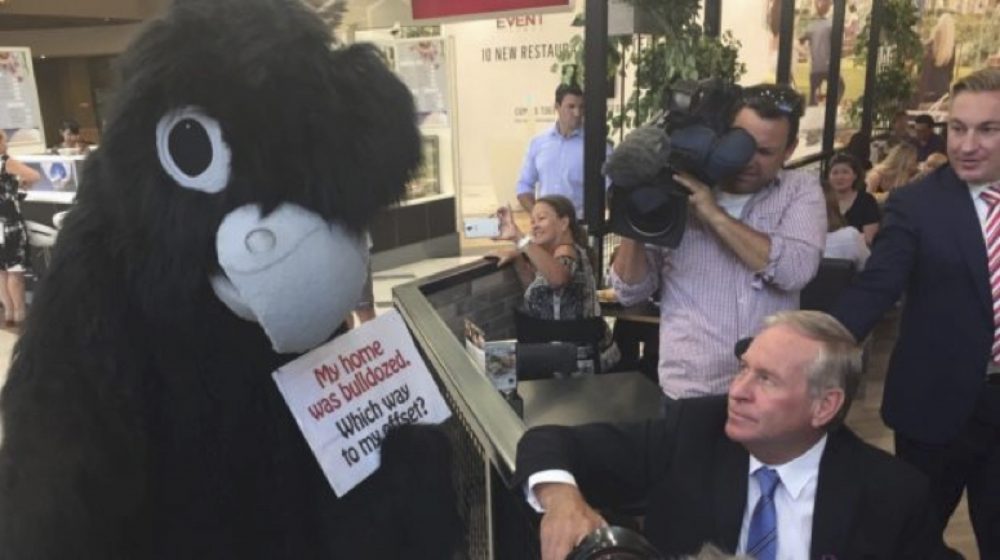
Humor played a key role, something that Dravnieks says “really resonated with a lot of people”. There were the protesters dressed up in black cockatoo costumes, one who approached the premiere in a shopping center asking “which way to my offsets” (a reference to absurd idea that the state government could in fact “replace” or compensate for these irreplaceable lands). And the protesters in bikinis who cozying up the premiere on a beach cleverly displayed protest messages written down their arms, something the premiere did not notice but photographers did.
“This has been the whole campaign. People would just come up with ideas and do things.” One of the most creative was an hour-long “silent stand”. A thousand people showed up in downtown Perth to protest in silence. One person had the idea of small patches of blue fabric that would symbolize the remnant bushlands, and these became a common sight pinned on clothing. Even today many supporters continue to wear these small pieces of blue fabric, pinned to their shirts or coats, showing solidarity and meant to indicate the value of saving “remnant pieces” of bushland.
Dravnieks speaks about the longer legacy of protesting, and of a community that learned the virtues and values of collectively standing up for something strongly believed in. “It showed people that civil disobedience is today”, it’s not just something suffragettes had to engage in a hundred years ago. And she speaks of the sense of being able to do something, to stand up and oppose something profoundly wrong, and the pride she saw from taking a stand. “I watched children who were so very proud of their parents for the stand that they were taking.”
The power of nature, especially in a city, is an important point of hope in this story. The protest campaign was in the end a massive awareness raising exercise, an epiphany for many about the beauty and wildness close by, and the ability to engage in a process of standing up in defense something dear. It was a chance to cultivate a spirit of concern for a larger world, beyond short-term thinking, and beyond personal self-interest.
The clearance that occurred were moments of shared violence, as many watched bulldozers in minutes knock down trees hundreds of years old. Residents and protesters witnessed firsthand when Bandicoots and Frogmouth Owls and other animals were displaced or killed by the deforestation. Most often the pain and suffering of wild fauna is not experienced or seen. Professor Hugh Finn, of the Curtin Law School, who has also been involved in the Roe 8 campaign, has studied with others the magnitude of these impacts and refers to them as “the invisible harm,” in a recent article in Wildlife Research. He estimates (with Nahiid Stephens) that deforestation in Queensland and New South Wales, likely results in more than 50 million animals being killed each year (Finn and Stephens, 2017).
It remains to be seen what the long-term implication of the Beeliar campaign and victory will be. There is now an especially well-informed constituency, emboldened by this political victory, and perhaps a force for future conservation good. It will be interesting (and maybe a good research project) to monitor how the cultivating of this stronger civic environmentalism plays out and shapes conflicts and planning the future. And one wonders how the emotional connections with, and deep caring for nature might be harnessed on behalf of larger global threats of deforestation and habitat destruction. Could Save the Beeliar Wetlands become a force for stopping land clearance in Borneo or Sub-Saharan Africa, or perhaps even in other parts of Australia? There is little doubt in my own mind that cultivating awareness and practicing conservation activism can (and must) carry over to over places, though the precise mechanism and processes to allow this to happen are unclear.
There are some important post-campaign tasks, including formal transfer of these bushlands from ownership by the state roads department to its parks department. And there is major restoration and revegetation work to be done for those areas that had been cleared, much of which has already begun. Sadly, some off-road vehicle use has already trammeled newly sprouting vegetation, but in the longer run the prospect for regeneration is quite good.
There is also a lot of momentum around the idea of connecting these remnant bushlands into a larger ecological corridor—a concept being called “Wetlands to Waves,” as the corridor will extend from the Beeliar Wetlands site all the way to the coast. This is a promising initiative, though one wonders whether an even larger ecological concept could weave together parks and greenspaces of various kinds into a much larger “bushland green grid,” and one that might extend well into the Indian ocean, perhaps more fully encompassing marine protection and nature as well.
I found one the most powerful voices to be Noel Nannup, an Noongar elder. We interviewed him at a most hopeful site—Telegraph Hill, a park in Fremantle that has itself gone through regeneration, though it took 120 years from the time is was denuded. Nannup spoke of the aboriginal heritage and deep history of the bushland sites in jeopardy and how the government ignored this heritage (and structured the project in a way that allowed them to ignore or skirt the requirements of the Aboriginal Heritage Act). “They pushed us aside…treated us with contempt.” For the Noongar people, these sites were sacred; and continuously visited and occupied, likely for more than 60,000 years. “There’s a spiritual energy line, a flow through there that our people have followed for thousands of years. Our people are buried along it. A lot of people were born along it, and lived their complete lives traveling around in a 6-season cycle. Being born there every year you went back to visit your birth site.”
Despite the tragedy of half of these sacred lands succumbing to the bulldozer, Nannup remains optimistic. It was the spirit at work, through people, that saved the land. And he sees the key to the future as continuing what he calls this “social investment in the environment.” For the Noongar people this is a natural thing and the result of long-standing traditions that foster deep social and emotional investment in the natural world.
“So for us our social investment is that for millennia our people have buried placentas under certain trees,” Nannup says. “So our DNA is in our trees. So when we say ‘that tree is me and I am that tree,” we mean it.” That unity with environment, that sense of oneness is perhaps the best way to guard against its destruction. How we fully cultivate that in the non-aboriginal world, though, remains an open question.
The Perth story is a hopeful one for campaigners and organizations in other cities and countries where highway projects threatened nature. Perth shows it is possible to mount a compelling campaign to bring the community together around a different vision of the future, and to win elections and change direction. And there are other planning and policy dimensions as well.
From the violence of bushland clearance and pursuit of a flawed highway, is a renewed sense of the shared value these bushlands have in the lives of Western Australian, and the special role they play, indeed must play, in urban life. That is one of the hopeful messages. “Never Again,” is the title of a forthcoming book about the campaign, written by a group of professors (they called themselves “the Angry Academics”), edited by Peter Newman. There is the sense that the broader community will simply not allow a similar loss to take place in the future. Without land transfer in the case of the Roe 8 lands, and better, stronger environmental laws and land protection standards more generally, it’s not entirely clear that this collective-admonition will stand up; but I certainly hope it will.
While ultimately a hopeful story of how a community can successfully oppose a project like this, and can come to the defense of nature, there are many cautionary bits to this story. One is just how flimsy the legal protections were (and are) for such lands, and how pliable the existing environmental laws and regulations were. The highway was allowed to move forward in part as a result of the providing of compensatory “offsets” for the habitats that would be lost, yet almost all agreed these bushlands, and especially the wetlands, were simply irreplaceable.
I asked Nannup whether he saw any chance that the non-indigenous population of Western Australians might learn from and embrace some of the deep connections to nature and place held by the Noongar people. Indeed, the larger world would benefit. Nannup described the sense of “oneness” with the bush the Noongar’s have, something that would make the kind of destruction set in motion by the state government pretty unimaginable.
One Noongar practice that I’m especially fond of and believe might have some practical conservation effect is that adopting of one or more totem. As Nannup explained, this is deep tradition, and he explained the importance of the bronzewing pigeon, his own particular totem. As Nannup explained, when you were given a totem, you were expected to learn everything you could about that animal or plant. He went on to explain, in remarkable detail, how the bronzewing pigeon cools itself, and how it digs small holes that later become important receptacles for wattle tree seeds.
I have been thinking a lot about what ought to be my own totem. In my recent time in Perth there are many different plants or animals that fascinate me. Shortly after arriving we were visited by a pair of black cockatoos, who hung around to watch us. I’ve been enamored of black cockatoos, and had the pleasure of seeing flocks of them at several points on this recent visit. I don’t know enough, but will endeavor to learn more, and since my own deep home is Virginia, I will be selecting some local totems more appropriate to where I live.
Tim Beatley
(With a photo essay by Carolena Bastian-Beatley)
Charlottesville
Finn, Hugh and Nahiid Stephens, “The Invisible Harm: Land Clearing as an Issue of Animal Welfare,” Wildlife Research, January, 2017.

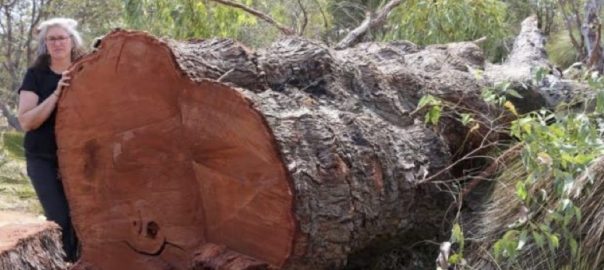






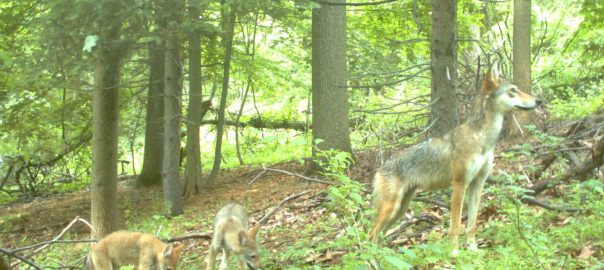
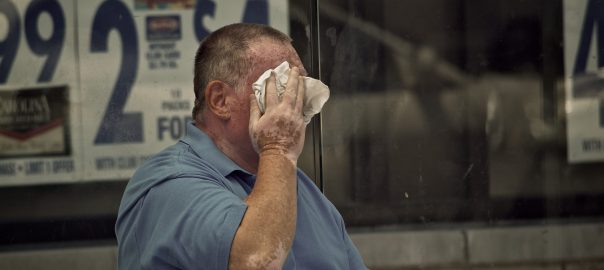

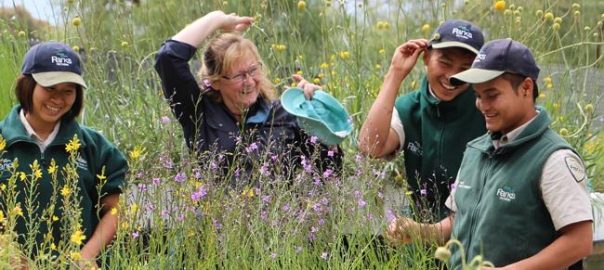
Add a Comment
Join our conversation